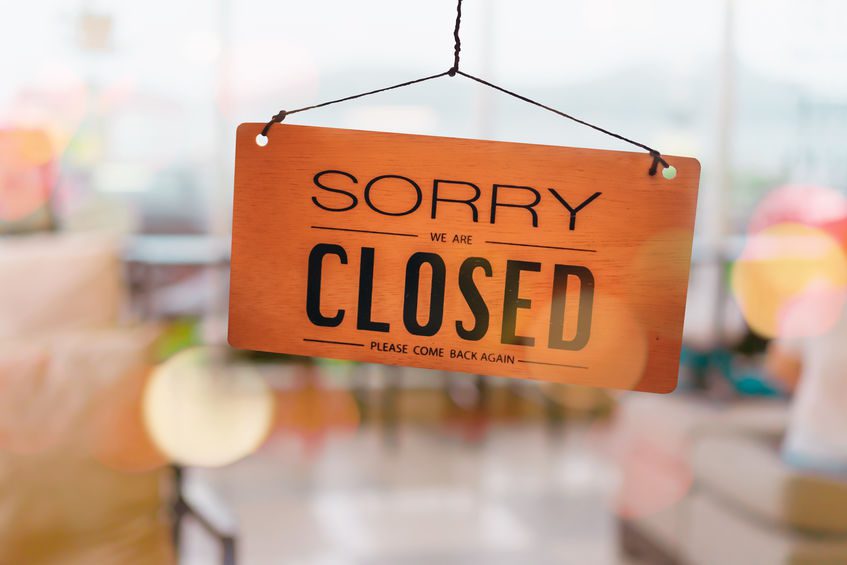The list of restaurants permanently closed continues to grow
May 14, 2020 by DarcieYesterday chef and restaurateur David Chang announced that he was closing two of his restaurants for good and moving a third to a new location. Even though Chang has nimbly pivoted to face challenges in the past and has a stable of deep-pocketed investors, he is not immune from the economic affects of the coronavirus pandemic. He’s far from alone: Eater Chicago maintains a growing list of eateries that have permanently closed and California estimates that without state aid, up to 30,000 restaurants could fold in coming months.

In London, figures show that from January to March, restaurant sales plunged over 20 percent, and that number includes two months in which they were operating fairly normally. Restaurateurs and food personalities like Tom Colicchio have been sounding alarm bells for weeks, noting that without significant government intervention, huge swaths of the restaurant industry could be wiped out, with independent restaurants faring the worst.
There is no doubt that closures will continue to rock the industry amid extensions of stay-at-home orders, strict social distancing requirements, and the reluctance of patrons to rush back in even when the lockdown is lifted. What does this mean going forward? Some pundits predict that large chains will be in the best position to capitalize as restrictions are eased, as they have the most cash reserves and investors willing to prop them up until they get their feet back under them again. Those that will suffer the worst include the smallest eateries, many of which are led by innovative young chefs (who not coincidentally often end up writing cookbooks that amaze and inspire). Where will they go from here?
For his part, Chang says that he will have to change his business model to put himself in a more secure position. “We cannot be this vulnerable ever again,” he tells Eater. He is betting on concepts like Noodle Bar, which can accommodate more stringent requirements for social distancing, and expanding his line of food products that can be sold both in restaurants and in stores. All restaurant owners will have to quickly find new ways to make money, forcing institutional changes that would normally occur over decades into just a couple of years. The question of what independent restaurants will look like on the other side of the pandemic won’t be answered immediately, although I expect we will see a lot of creative ideas in the coming weeks and months, like Berkeley, CA’s plan to close several streets to increase outdoor seating space to help the city’s vibrant restaurant scene.
Categories
- All Posts (6940)
- Antipasto (2135)
- Author Articles (247)
- Book News (935)
- Cookbook Giveaways (983)
- Cookbook Lovers (257)
- Cooking Tips (109)
- Culinary News (299)
- Food Biz People (552)
- Food Online (791)
- Holidays & Celebrations (272)
- New Cookbooks (149)
- Recipes (1500)
- Shelf Life With Susie (231)
- What's New on EYB (133)
Archives
Latest Comments
- eliza on What foods do you look forward to the most for each season?
- kmwyman on Rooza by Nadiya Hussain – Cookbook Review and Giveaway
- Maryd8822 on The Golden Wok – Cookbook Giveaway
- Dendav on Danube Cookbook Review and Giveaway
- sanfrannative on Rooza by Nadiya Hussain – Cookbook Review and Giveaway
- darty on Danube Cookbook Review and Giveaway
- Atroyer7 on Danube Cookbook Review and Giveaway
- demomcook on What foods do you look forward to the most for each season?
- demomcook on Danube Cookbook Review and Giveaway
- Darcie on How cookbooks can help build resilience